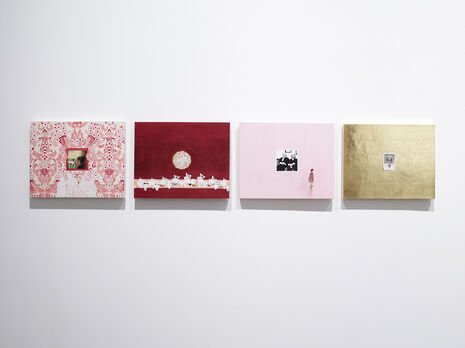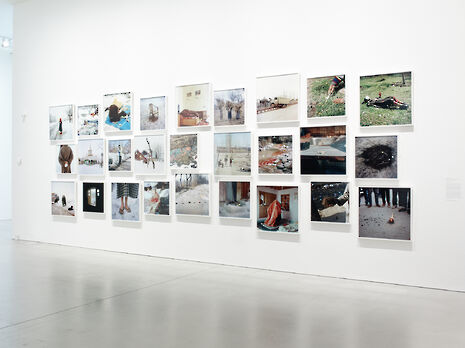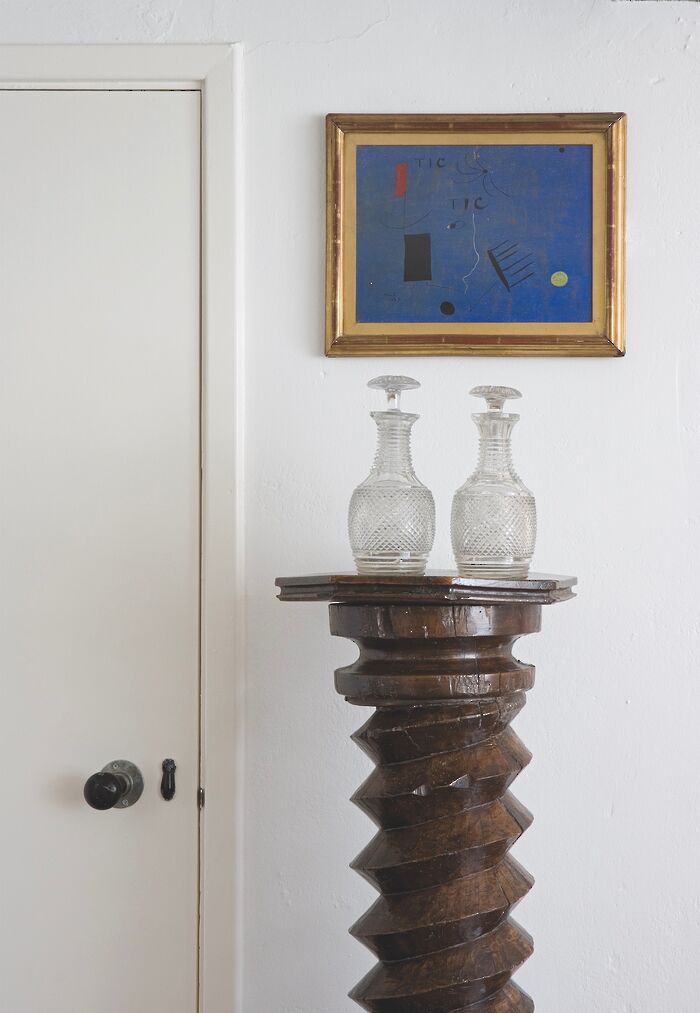Homelands: a triumph of eclecticism
Kettle’s Yard’s new exhibition provides a fascinating array of artistic voices without overextending itself, says Nicholas Harris

The plurality suggested by Homelands as a title is remarkably apposite for this exhibition; diversity and eclecticism are in a way the only things which link what can at times be a jarringly disjointed experience. Perhaps this shouldn’t be surprising, the accompanying leaflet explains that through ‘photography, sculpture, painting, performance, and film’ Homelands explores the ‘continuing resonances and contested histories’ following the simultaneous partition and parturition of India, Pakistan and, later, Bangladesh. If the aim is to present a multitude of voices, a patchwork of experiences, then this exhibition is a perfect success.
You may not leave Kettle’s Yard with a full understanding of the history, but the visceral implications of each artist’s interpretation would be hard to miss
In one room, jostling against each other, stand a paint splattered artist’s grotto, a selection of paintings, a triptych of television sets and a fluttering split-flap announcement board, as might be found in a train station, a theme of migration immediately introduced. In another, a sweep of photographs, a selection of conceptual ink drawings, a wall of photogravures and a film compete for your attention. Amidst this, it is difficult to know where to look, as if paying attention to any particular square of wall-space risks neglecting four or five others.
But there is certainly something for everyone. If immersive art is your thing, perch yourself on the bench in front of the announcement board, an exhibit by Shilpa Gupta simply called Untitled. Ever-shifting, the shown phrase changes every few seconds, with little obvious connection between the presumably carefully chosen aphorisms and injunctions. After just a short sit, I recall seeing ‘AGE SEX RELIGION LYF’, ‘I N D I A’ and ‘THOU SHALT NOT KILL’. Next to these numbers are listed, some of them relating to migration figures and some to deaths in mass killings. With only moments to wrestle with each highly implicative statement, this almost encapsulates the entire exhibition, with contrasting and sometimes contradictory ideas thrown at you in sequence.
If the presentation of a multitude of voices, of a patchwork of experiences, is the aim, then this exhibition is a perfect success
Other exhibits have the good grace to sit still when you look at them, however, allowing for close examination. Most poignant of these is probably Desmond Lazaro’s biographical Cini Films series. Each painting is based upon a family photograph from his childhood in Leeds. Some are touching domestic shots whereas others depict family days out, one at Buckingham Palace and another at the Victory Memorial. All of them possess a household charm and provide a limpid and candid account of the artist’s childhood.

Alongside these stands a new series of four paintings by Lazaro, conceived during a residency at Kettle’s Yard and King’s College. Each is inspired by the story of an immigrant family in Cambridge, originating from Chile, the United States, Hungary and Bangladesh respectively. These are intricate works, each unique to the family whose past they connect with, but beautiful in their use of colour to surround an image relevant to each family.

Other parts of Homelands have a more direct and political angle, particularly Sohab Hura’s photography project Snow, begun in 2014 and still growing. Here, twenty-seven photos are on display, all taken in the disputed region of Kashmir which has been the site of many conflicts between India and Pakistan since Partition in 1947. The key element of this exhibit is in showing the effects of this on the region rather than providing a sense of narrative, the arrangement of the photos in a seasonal sweep from winter to summer giving the sense of a year-in-the-life. On the left, a child hides a snowball behind their back but as the eye moves across, the scene changes to that of soldiers sauntering up a dusty mound or a lorry crashed into a roadside barrier. Everyday life, with its ingenuous charms, struggles, but does continue, alongside the privations of this long-run conflict.
A similar effect is achieved with Munem Wasif’s photography display Spring Song. This is a collection of images of the objects Rohingya people brought with them to Bangladesh when exiled by Myanmar’s military dictatorship, ranging from toys to precious family papers and a mobile phone. The blunt presence of these objects, each displayed in front of a different background of a single soft colour, is a remarkable way of handling this tragedy. It speaks to us through the forgotten accoutrements Wasif collected from Cox’s Bazar’s refugee camps in Bangladesh.

If Homelands is jarring enough at a thematic level, the final exhibit completes this with a clang. Shilpa Gupta’s Song of the Ground consists of two stones taken from the Teesta River (which flows from India to Bangladesh) repeatedly bashing against each other on the end of poles through a clock mechanism. This is perhaps the bluntest part of the exhibition, the sound echoing throughout the entire space. But the purport of the noise, that of repeated collision between two similarities, is clear enough.
A chronicle of the Indian subcontinent since 1947, beginning with Independence and Partition, would take a historian of some ambition to tackle. The history of British colonisation in this region has sown political and religious conflicts which have only ossified over the course of the 20th century. Yet Homelands never once feels strident or overextended. The art here comes from artists from India, Pakistan and Bangladesh and their ethnic diasporas. By allowing its eleven artists to interpret that theme in their particular way, light is shed on small but profound elements of this story. You may not leave Kettle’s Yard with a full understanding of the history, but the visceral implications of each artist’s interpretation would be hard to miss.
 Comment / Plastic pubs: the problem with Cambridge alehouses 5 January 2026
Comment / Plastic pubs: the problem with Cambridge alehouses 5 January 2026 News / Cambridge businesses concerned infrastructure delays will hurt growth5 January 2026
News / Cambridge businesses concerned infrastructure delays will hurt growth5 January 2026 News / New movement ‘Cambridge is Chopped’ launched to fight against hate crime7 January 2026
News / New movement ‘Cambridge is Chopped’ launched to fight against hate crime7 January 2026 News / AstraZeneca sues for £32 million over faulty construction at Cambridge Campus31 December 2025
News / AstraZeneca sues for £32 million over faulty construction at Cambridge Campus31 December 2025 Interviews / You don’t need to peak at Cambridge, says Robin Harding31 December 2025
Interviews / You don’t need to peak at Cambridge, says Robin Harding31 December 2025










